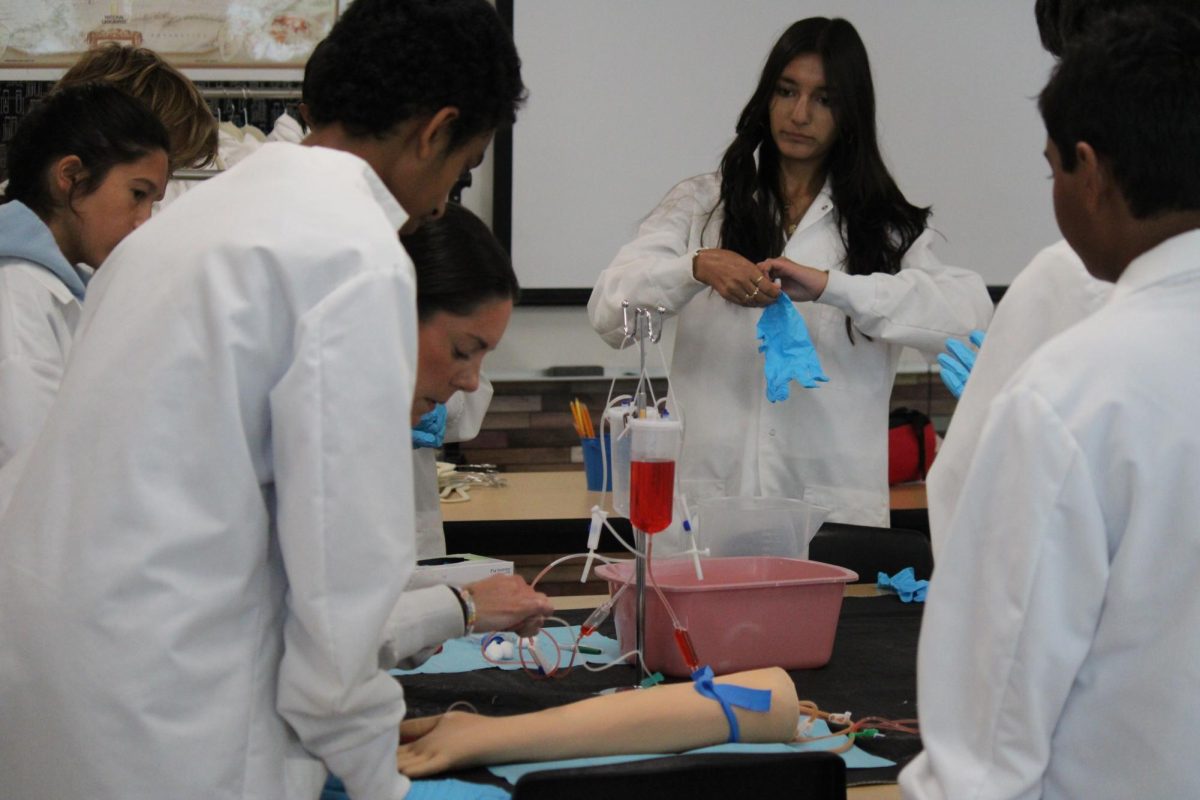The Real Property Advisory Committee (RPAC) presented their final report to the PUSD Board of Education, Jan. 23. The Committee decided in a 6-4 vote that the three vacant PUSD sites were not needed for educational purposes at this time. The sites are located in Santa Fe Valley, Torrey Highlands, and Black Mountain Ranch South (Santa Luz), totaling 49.52 acres. Going forward, the Board will make a decision on what will be done to the properties.
According to the PUSD website, the RPAC is made up of 11 unpaid, volunteer members who are meant to represent multiple facets of the community: the demographics of the district, the business community, landowners or renters, teachers, administrators, parents of students, and persons with expertise in environmental impact, legal contracts, building codes, and land use planning. Members were selected in an open application process through the PUSD website.
The RPAC was formed last October and held their final meeting last month, with the objective of determining if the vacant sites were needed by PUSD for educational purposes. They were also tasked with obtaining community input through public hearings and meetings, determining the potential need for surplus land for school purposes.
According to the final report, the committee reviewed the district’s enrollment history, projected student enrollment through the 2031-2032 school year, current and projected future residential development, and projected state and local demographics through 2070. RPAC co-chair and Willow Grove Elementary School office manager Cindy Chille said data showing declining enrollment contributed largely to the conclusion of the report.
“Projections were showing all local schools would drop in enrollment,” she said. “I work for the school district. I see [in] real time our enrollment declining. We were bursting at the seams five years ago, now, I have three empty classrooms. If we’re dropping in enrollment and currently have space for students at schools, why would we build another? For the state to approve building another school, you have to show or predict that you have 25,000 students that don’t have a place. That wasn’t the case. We also live in an expensive area. The idea that young families are going to move here does not seem realistic because it’s very unaffordable.”
When the committee reviewed feedback from the community, Chille said she sensed a loss of trust, partially due to the proposed and now-void Costco sale on the Santa Luz property, something she hoped the RPAC would help address.
“My recommendation [to PUSD] was going forward, any decisions they were going to make should include community involvement,” Chille said. “Based on emails we received, the comments at our committee meetings [said] that there was a breakdown of trust on the proposed Costco sale. Even though that sale didn’t go through, it broke trust because they felt the district was undermining them. One of the board members acknowledged the recommendation of the committee and going forward, they were going to move slowly so they could include community voices before making any decision.”
However, Chille said a lack of action also contributed to the negative reaction.
“[What] I’ve heard a lot is from residents who were under the impression the Mello-Roos fees they were paying in Santa Luz was going toward the building of a middle school,” she said. “There was push back because not only did it not become a middle school, but [PUSD] didn’t talk to the community about what they would like to see there.”
Chille said the RPAC also collected data on population, projected development, and maintenance costs to weigh the option of selling the land. As of now, the Torrey Highlands site costs the district approximately $125,000 a year in unused site assessment fees to the State of California’s Office of Public School Construction and $10,000 in general maintenance and upkeep for the remaining two sites.
“We pay taxes on that land and we do abatement work,” she said. “The question was, is it worth [keeping] when we’re spending money to keep it vacant? One of the board members stated that what we’re paying is low enough that they could afford to take the [decision-making process] in a slower manner to allow community input.”
In the past, RPACs have been formed temporarily for development projects and typically have four total meetings according to Chille. But this time, the reform was partially sparked by the budget deficit. Although PUSD is looking into possibly selling the land, Chille said she’d like to see it used to benefit both the community and the district.
“The board wanted to reassess if the land was needed for school purposes or if it was viable to sell,” she said. “The problem is, if [sold] to a developer, it takes any community input out of it, so the developer can build a skyscraper if they wanted to. We had recommendations for a park, a [recreational] center, centralized kitchen, enrichment center or other things that could be beneficial to the district. Those suggestions were forwarded back to the board. I believe there’s a way the land could be used to benefit both the community and the district.”
A development idea Chille advocated for in the final report was staff housing.
“I’d love to see staff housing like San Diego Unified [School District] did because I feel that would attract more highly-qualified teachers,” she said. “We might not be able to pay as high as Del Mar Unified [School District], but that would be an added bonus. I don’t know if that’s something they are even thinking about, [or] would even consider. From my point of view as a district employee, I thought it would be excellent would help attract a lot of talent to the district.”
While the committee planned only four meetings, concluding last December, the RPAC voted to extend it.
“We extended that [to] right before the board meeting because people wanted more data,” she said. “We wanted to give everybody a chance to be heard and we were able to do that by extending it. Because we’ve determined it’s not for school purposes, the board will make the decision going forward. If they want us to be part of that decision-making, they would ask us to reform.”
For Chille, joining the committee meant being able to inspire positive progress.
“We [RPAC members] are all volunteers; none of us were paid for this,” she said. “I personally joined the committee because I wanted to see good done with that property. There was animosity because of the previous proposed uses for the properties. I wanted to be part of that and help present community voices to the Board.”
Going forward from the RPAC’s consensus, Chille said she believes active communication can bridge the district and its community.
“If the district takes it slowly and really hears the voices and includes the members of the surrounding communities in the final decision, I think we can start rebuilding the trust,” Chille said. “You can only rebuild trust through honest actions. I think that if they’re honest and transparent moving forward, that it can be rebuilt.”





![Jolie Baylon (12), Stella Phelan (12), Danica Reed (11), and Julianne Diaz (11) [left to right] stunt with clinic participants at halftime, Sept. 5. Sixty elementary- and middle-schoolers performed.](https://wvnexus.org/wp-content/uploads/2025/09/IMG_1948-800x1200.png)
